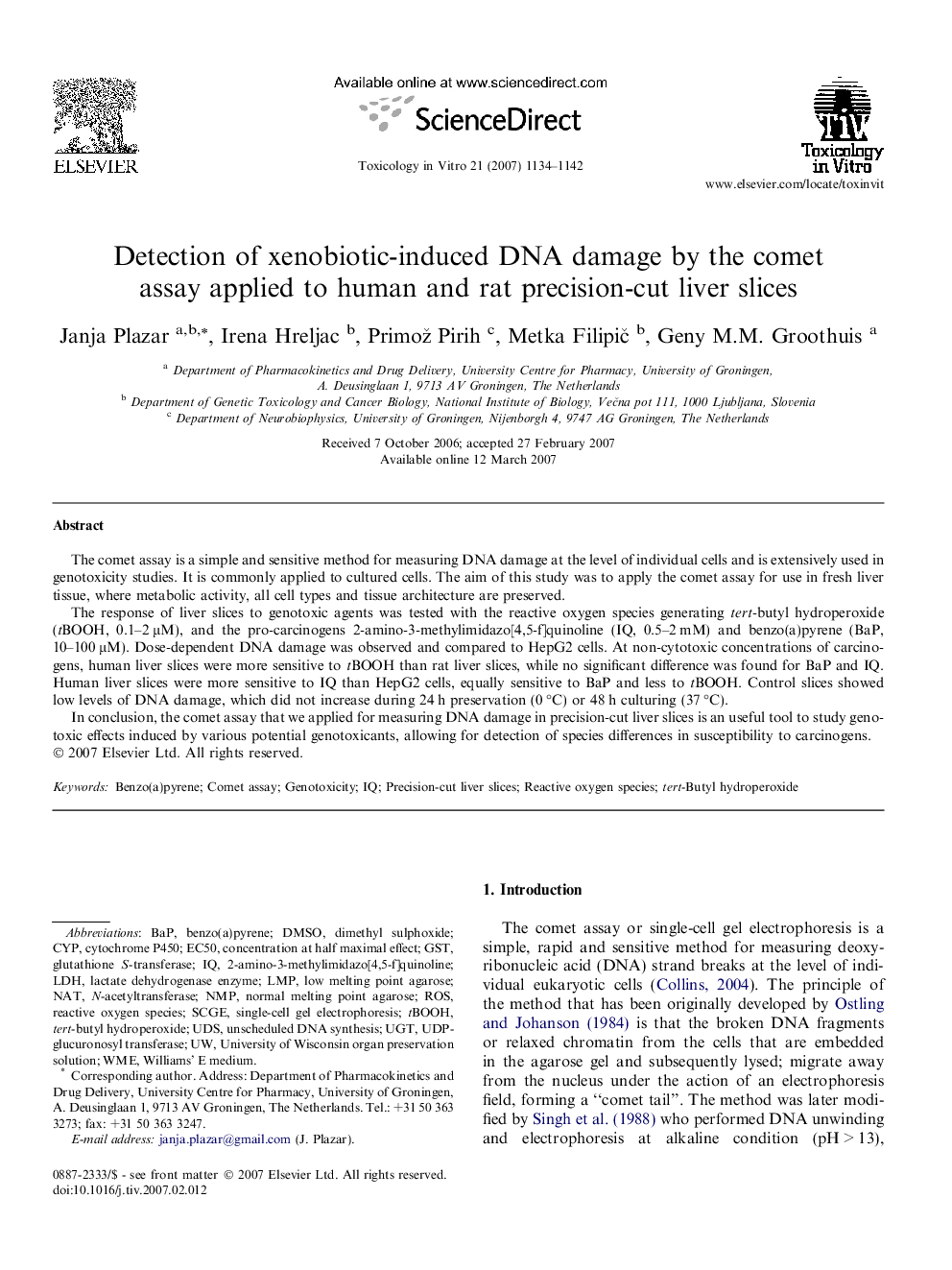| کد مقاله | کد نشریه | سال انتشار | مقاله انگلیسی | نسخه تمام متن |
|---|---|---|---|---|
| 2603778 | 1133835 | 2007 | 9 صفحه PDF | دانلود رایگان |

The comet assay is a simple and sensitive method for measuring DNA damage at the level of individual cells and is extensively used in genotoxicity studies. It is commonly applied to cultured cells. The aim of this study was to apply the comet assay for use in fresh liver tissue, where metabolic activity, all cell types and tissue architecture are preserved.The response of liver slices to genotoxic agents was tested with the reactive oxygen species generating tert-butyl hydroperoxide (tBOOH, 0.1–2 μM), and the pro-carcinogens 2-amino-3-methylimidazo[4,5-f]quinoline (IQ, 0.5–2 mM) and benzo(a)pyrene (BaP, 10–100 μM). Dose-dependent DNA damage was observed and compared to HepG2 cells. At non-cytotoxic concentrations of carcinogens, human liver slices were more sensitive to tBOOH than rat liver slices, while no significant difference was found for BaP and IQ. Human liver slices were more sensitive to IQ than HepG2 cells, equally sensitive to BaP and less to tBOOH. Control slices showed low levels of DNA damage, which did not increase during 24 h preservation (0 °C) or 48 h culturing (37 °C).In conclusion, the comet assay that we applied for measuring DNA damage in precision-cut liver slices is an useful tool to study genotoxic effects induced by various potential genotoxicants, allowing for detection of species differences in susceptibility to carcinogens.
Journal: Toxicology in Vitro - Volume 21, Issue 6, September 2007, Pages 1134–1142